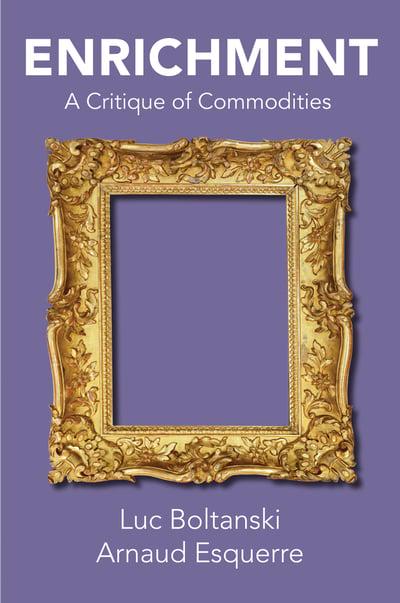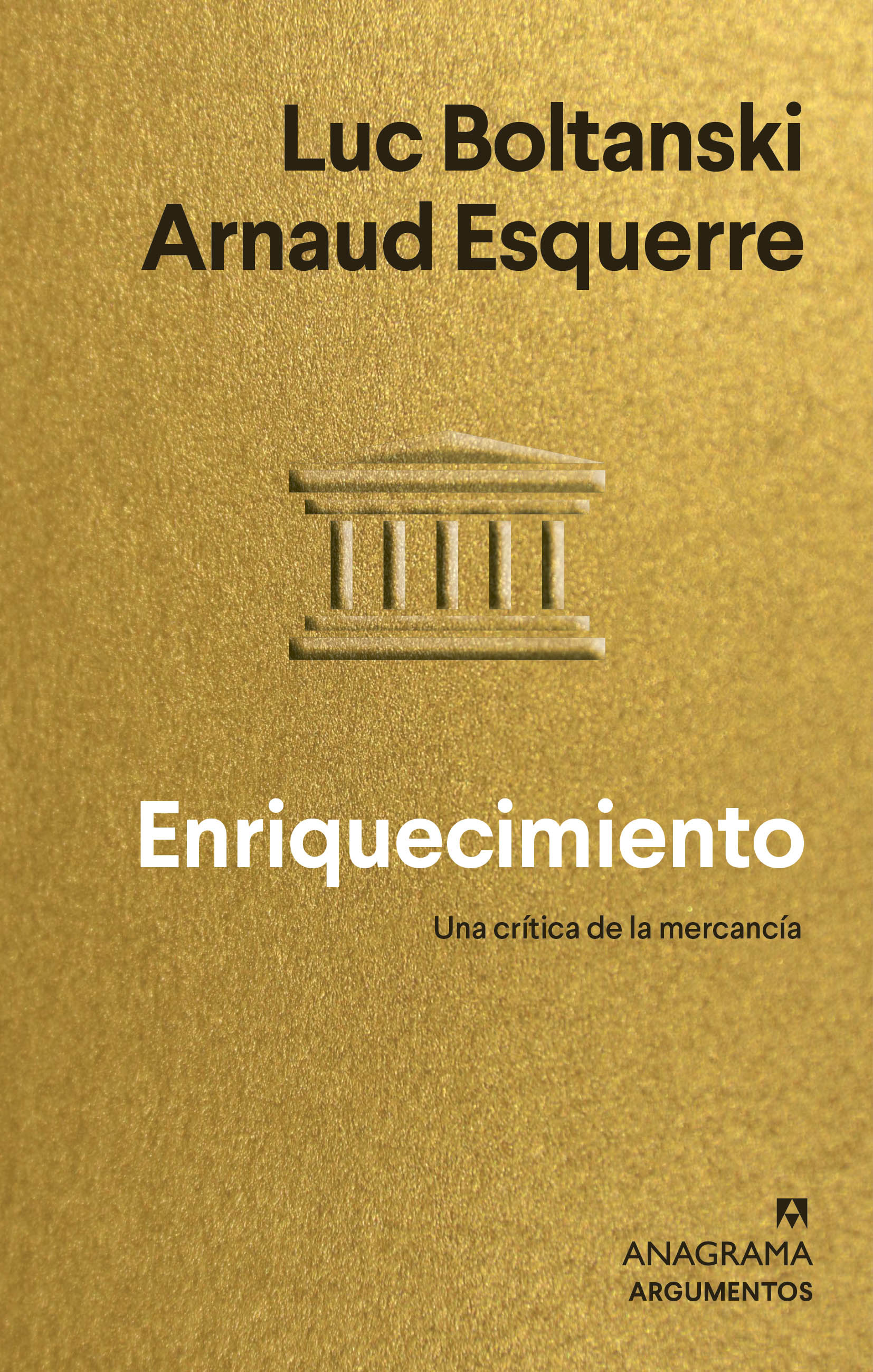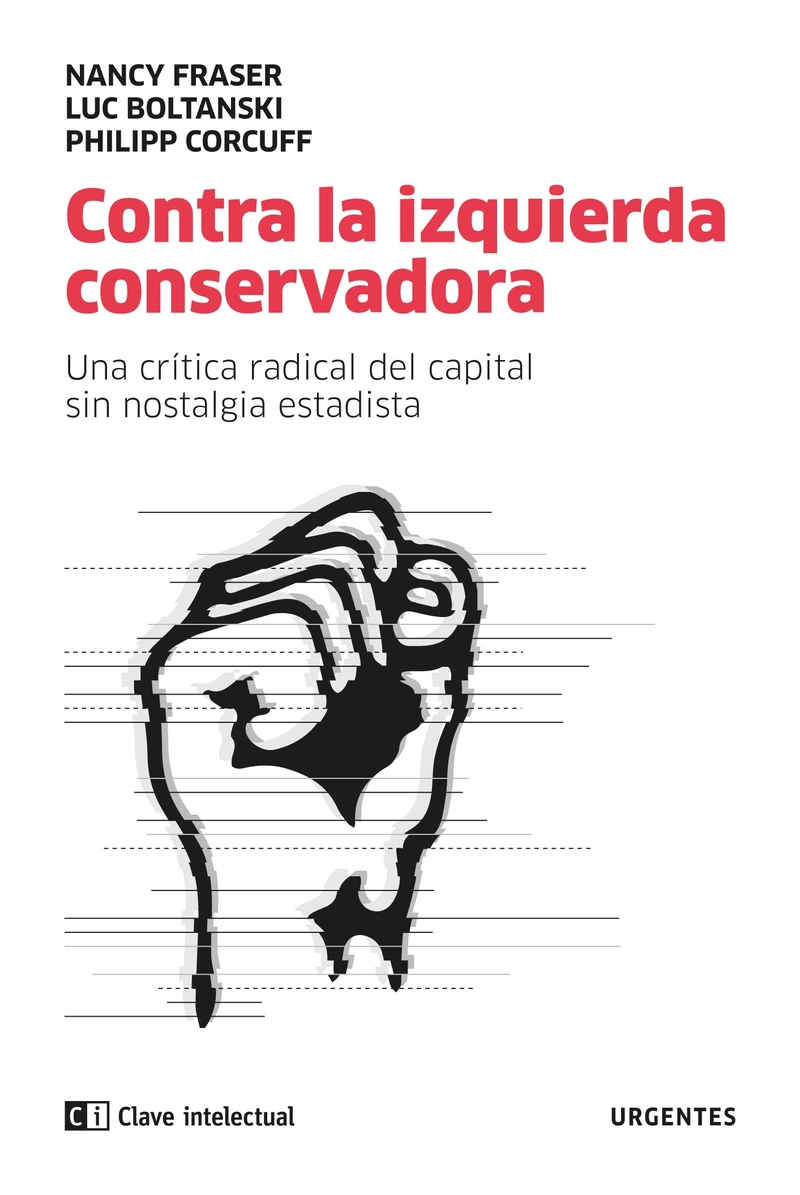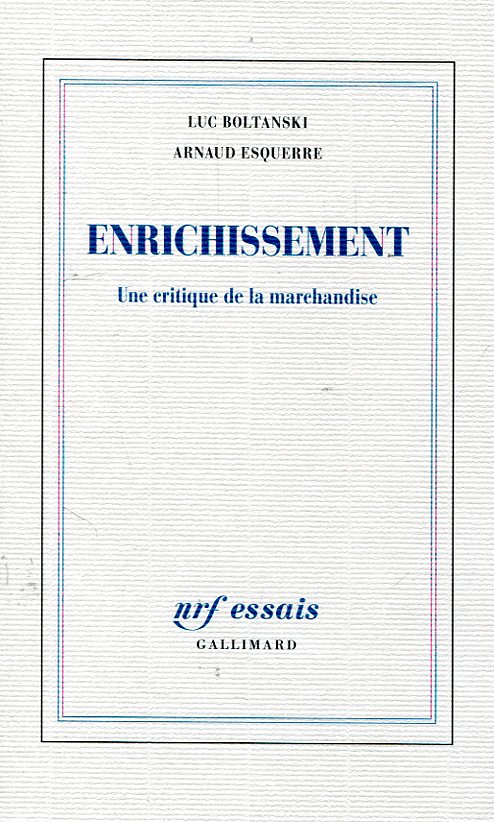Enrichment
a critique of commodities
- ISBN: 9781509528721
- Editorial: Polity Press
- Fecha de la edición: 2020
- Lugar de la edición: Cambridge. Reino Unido
- Encuadernación: Cartoné
- Medidas: 24 cm
- Nº Pág.: 600
- Idiomas: Inglés

This book offers a major new account of modern capitalism and of the ways in which value and wealth are created today. Boltanski and Esquerre argue that capitalism in the West has recently undergone a fundamental transformation characterized by de-industrialization, on the one hand, and, on the other, by the increased exploitation of certain resources that, while not entirely new, have taken on unprecedented importance. It is this new form of exploitation that has given rise to what they call the ‘enrichment economy’.
The enrichment economy is based less on the production of new objects and more on the enrichment of things and places that already exist. It has grown out of a combination of many different activities and phenomena, all of which involve, in their varying ways, the exploitation of the past. The enrichment economy draws upon the trade in things that are intended above all for the wealthy, thus providing a supplementary source of enrichment for the wealthy people who deal in these things and exacerbating income inequality.
As opportunities to profit from the exploitation of industrial labour began to diminish, capitalism shifted its focus to expand the range of things that could be exploited. This gave rise to a plurality of different forms for making things valuable – valuing objects in terms of their properties is only one such form. The form that plays a central role in the enrichment economy is what the authors call the ‘collection form’, which values objects based on the gap they fill in a collection. This valuation process relies on the creation of narratives which enrich commodities.
This wide-ranging and highly original work makes a major contribution to our understanding of contemporary societies and of how capitalism is changing today. It will be of great value to students and scholars in sociology, political economy and cultural studies, as well as to anyone interested in the social and economic transformations shaping our world.
Introduction
PART I. Destruction and Creation of Wealth
Chapter 1. The Age of the Enrichment Economy
The deindustrialization of Western Europe
Old and new sites of prosperity
The omnipresence of enriched objects
The rise of luxury
Heritage creation
The development of tourism
The expansion of cultural activities
The art trade
Arles: from railroad shops to contemporary art exhibits
An economic reorientation toward the wealthy
Chapter 2. Toward Enrichment
The characteristics of an enrichment economy
Dormant resources in the enrichment economy
Changes in French cultural policy
A new perspective in economic analysis
A shift to different scales
From ornamental patrimony to heritage creation
Local mutations in global capitalism
Partisans of things
Part II. Prices and Forms of Valuation
Chapter 3. Commerce in Things
The commodity condition
On the circulation of things
Changing hands
The process of determination
Price and metaprice
Critiquing the price
Value as justification for a price
Price as an element in the construction of reality
Chapter 4. Forms of Valuation
Structure and transformation group of forms of valuation
Analytic and narrative presentations of things
The problem of valuation by means of images
On the reproduction of things
Institutions and forms of valuation
Structuralism and capitalism
Competition from a systematic viewpoint
Capitalism and markets
The role of the capacity to reflect
The structure of the forms of valuation
Part III. Commodity Structures
Chapter 5. The Standard Form
The model for the standard form
The standard form and industrial production
Prototypes and specimens
The proliferation of things without persons
The internal tensions of the standard form
The unease created by the standard form
Chapter 6. Standardization and Differentiation
The historical dimension of the forms of valuation
From trade in things to the circulation of commodities
The effect of standardization on the constitution of forms of valuation
Material economies, immaterial economies
Chapter 7. The Collection Form
The modernity of the collection form
Systematic collection as an arrangement for valuation
Collectors’ items
Price and value of collectors’ items
The fields of collectibles
The structure of the collection form
Chapter 8. Collection and Enrichment
The usefulness of useless things
Collecting in thrall to marketing
On the use of the collection form by luxury firms
From lumber to luxury goods: the transformation of the Pinault group into Kering
Capturing the wealth of the wealthiest
Values and prices of luxury product brands
Standard products with a “collector effect” and collectors’ items
The collection form and contemporary art
The contradiction of the enrichment economy
Chapter 9. The Trend Form
Trend, sign, and distinction
The structure of the trend form
The economic constraints of the trend form
From the trend form to the collection form
Chapter 10. The Asset Form
Characteristics of the asset form
On the liquidity of things as assets
The commercial potential of assets
Part IV. Who Profits from the Past
Chapter 11. Profit in a Commercial Society
Competition and differentiation
Surplus work value and profit
Surplus market value and profit
Displacing commodities or displacing buyers
Profiting from the wealthy in the capitalist cosmos
Chapter 12. The Enrichment Economy in Practice
An enriched village: Laguiole in Aubrac
The transformation of habitats through heritage creation
New “traditional festivals” in the village
Heritage creation around food
A landscape to contemplate
Cutlery valorized by the collection form
The “artisanal” manufacture of a knife in Laguiole
A collectible knife
Museification as a means of commercialization
The problem of the origin of materials
Distinguishing Laguiole’s knives from those made elsewhere
“A name, a brand, a village”
How the residents lost the ability to dispose freely of the name of their village
A geographic indication to “highlight the treasures of the territories”
Chapter 13. The Shape of the Enrichment Society
The organization of things and persons
Who can profit from an enrichment economy?
“Losers” and “servants”
The return of “rentiers”
Chapter 14. Creators in the Enrichment Society
The economic condition of culture workers
Self-promotion by creators
The constraint of self-exploitation
The circumstances behind the crystallization of social classes
Troubled critiques
Conclusion. Action and Structures
The enrichment economy and a critique of capitalism









